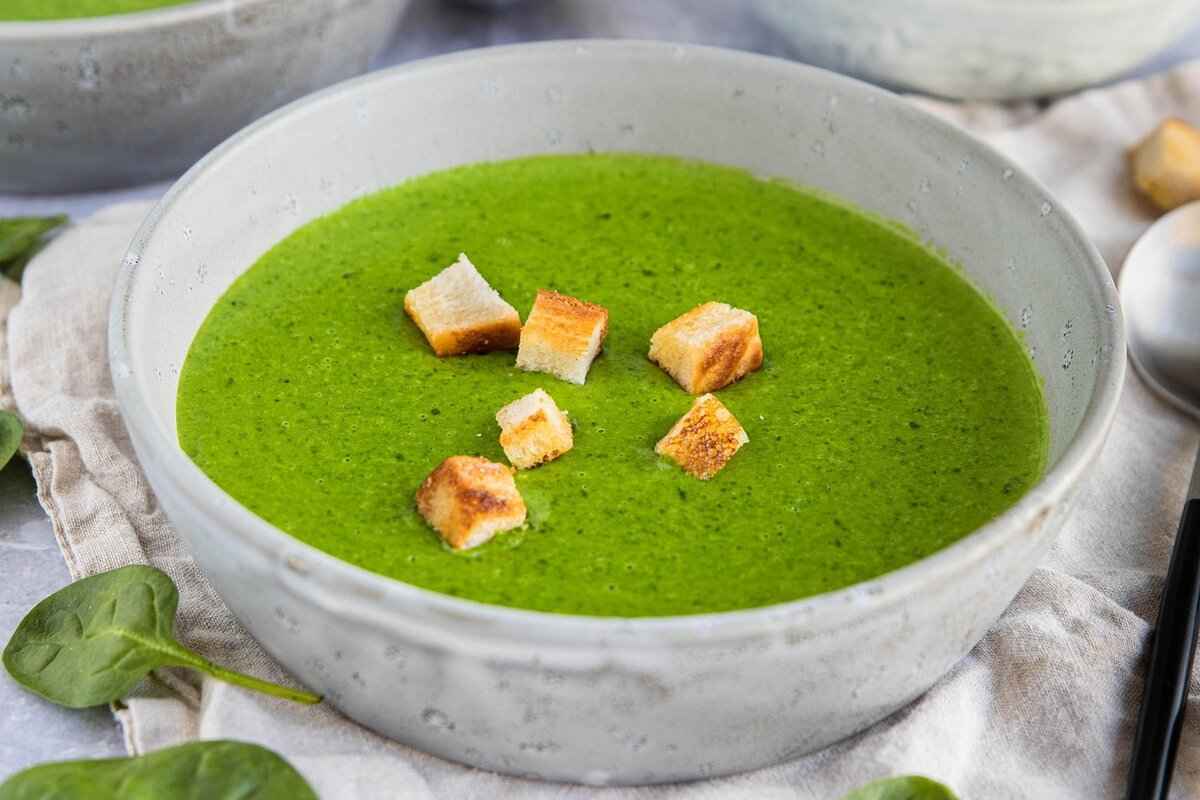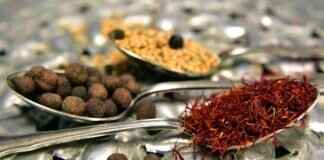Bird’s Nest Soup is not just a culinary dish; it is a cultural phenomenon steeped in history and tradition. Originating from China, this delicacy is made from the nests of the swiftlet bird, renowned for their unique properties and nutritional value. As we delve into the intricacies of Bird’s Nest Soup, we will uncover its preparation methods, health benefits, and the ethical concerns surrounding its production.
Bird’s Nest Soup is celebrated for its gelatinous texture and distinct flavor. The nests, constructed from the saliva of swiftlets, are harvested and cleaned meticulously before cooking. This labor-intensive process is what sets the dish apart, making it a symbol of luxury and refinement.
The preparation of Bird’s Nest Soup involves several essential steps:
- Cleaning: Each nest must be cleaned by skilled hands to remove impurities, ensuring safety and flavor.
- Soaking: Nests are soaked in water for several hours to soften them, making them easier to cook.
- Cooking: The nests are then simmered, often with chicken or rock sugar, to create a rich, flavorful broth.
Bird’s Nest Soup is believed to offer numerous health benefits, including:
- Skin Health: Rich in glycoproteins, it is thought to promote youthful skin.
- Immune Support: Regular consumption may enhance immune function.
- Overall Wellness: It is often regarded as a tonic for overall health, supported by traditional Chinese medicine.
In Chinese culture, Bird’s Nest Soup is more than just food; it symbolizes wealth and prosperity. It is commonly served during significant events such as weddings and family gatherings, reflecting its esteemed status. The nest itself is a metaphor for love and devotion, making it a cherished gift among loved ones.
Despite its luxurious reputation, Bird’s Nest Soup faces scrutiny regarding its ethical implications:
- Ethical Sourcing: The harvesting of swiftlet nests raises concerns about sustainability and animal welfare.
- Environmental Impact: Unregulated harvesting can threaten swiftlet populations and their habitats, prompting calls for conservation efforts.
For those looking to experience this exquisite dish, authentic Bird’s Nest Soup can be found in specialty restaurants, particularly in Asia. Many high-end establishments take pride in their traditional preparation methods. Additionally, reputable online retailers offer quality nests for those interested in preparing the soup at home.
Making Bird’s Nest Soup at home can be a rewarding experience. Here’s a simple guide:
1. Purchase high-quality bird's nests from a reputable source.2. Clean the nests thoroughly to remove impurities.3. Soak the nests in water for several hours.4. Simmer the nests with chicken broth or rock sugar for flavor.5. Serve hot and enjoy the luxurious taste and health benefits!
With its rich history and cultural significance, Bird’s Nest Soup continues to captivate culinary enthusiasts around the world. Whether you indulge in it at a fine dining restaurant or prepare it at home, this delicacy offers a unique taste of tradition and luxury.

What is Bird’s Nest Soup?
Bird’s Nest Soup is a remarkable culinary creation that has captivated food enthusiasts for centuries. This traditional Chinese dish is not just a meal; it embodies a rich tapestry of culture, history, and health benefits. The nests used in this delicacy are crafted by the swiftlet, a small bird known for its unique ability to produce nests made entirely of hardened saliva. In this article, we will delve deeper into the origins, preparation, and significance of Bird’s Nest Soup, shedding light on why it remains a coveted dish in various cultures.
At its core, Bird’s Nest Soup is made from the nests of the cave-dwelling swiftlet. These nests are highly valued not only for their unusual texture but also for their purported health benefits. The nests have a gelatinous quality that, when cooked, creates a luxurious broth. This unique texture is what sets Bird’s Nest Soup apart from other soups, making it a sought-after delicacy in many Asian cuisines.
The preparation of Bird’s Nest Soup is a meticulous process that requires both skill and patience. The nests must first be cleaned thoroughly to remove impurities, a task that can take several hours. Once cleaned, they are soaked in water to soften them, which is crucial for achieving the desired texture in the final dish. The soaking process typically lasts anywhere from 2 to 12 hours, depending on the specific recipe and the quality of the nests.
- Cleaning: This involves removing feathers and debris from the nests, ensuring they are safe for consumption.
- Soaking: Soaking helps to rehydrate the nests, making them easier to cook.
- Cooking: The nests are then simmered, often with chicken broth or rock sugar, to enhance the flavor and create a rich, nutritious soup.
Bird’s Nest Soup is often touted for its health benefits, which are rooted in traditional Chinese medicine. It is believed to promote skin health, enhance immune function, and support overall wellness. The nests are rich in proteins, amino acids, and other nutrients that are thought to contribute to vitality and longevity. Many people consume this soup as a form of health tonic, particularly during recovery from illness or as part of a wellness regimen.
In Chinese culture, Bird’s Nest Soup is more than just a dish; it is a symbol of wealth and prosperity. It is often served during significant occasions such as weddings, birthdays, and family gatherings, reflecting its status as a luxury food item. The nest itself symbolizes love and devotion, making it a cherished gift among families and friends.
Despite its revered status, Bird’s Nest Soup has faced scrutiny regarding ethical sourcing and sustainability. The harvesting of swiftlet nests raises concerns about environmental impact and animal welfare. There is an ongoing debate about the need for responsible sourcing practices to ensure that swiftlet populations remain stable and that their habitats are protected.
- Ethical Sourcing: Advocates for sustainable practices emphasize the importance of responsible harvesting methods.
- Environmental Impact: Conservation efforts are critical to maintaining ecological balance and protecting swiftlet habitats.
Finding authentic Bird’s Nest Soup can be challenging outside of Asia, but there are options available. Many high-end restaurants specialize in this dish, offering it prepared by chefs who respect traditional techniques. Additionally, reputable online retailers provide quality nests for those interested in making the soup at home. This allows culinary enthusiasts to explore this unique dish in their own kitchens, bringing a taste of tradition to their dining tables.
In conclusion, Bird’s Nest Soup is a culinary treasure that combines unique ingredients, rich cultural significance, and numerous health benefits. Whether enjoyed in a restaurant or prepared at home, this delicacy continues to fascinate and delight food lovers around the world.

How is Bird’s Nest Soup Made?
Bird’s Nest Soup is not just a dish; it is a culinary masterpiece that embodies tradition, luxury, and meticulous craftsmanship. The preparation of Bird’s Nest Soup is a time-honored process that transforms simple ingredients into a sumptuous delicacy. This article delves into the intricate steps involved in making this iconic soup, highlighting the importance of each phase in achieving the perfect balance of flavor and texture.
The journey of creating Bird’s Nest Soup begins with the careful selection of swiftlet nests, which are primarily composed of hardened saliva. These nests are renowned for their unique properties and are considered a delicacy in many Asian cultures. The initial step in the preparation process is meticulous cleaning to ensure that the nests are free from impurities.
The cleaning process is labor-intensive and requires skilled artisans. Each nest is inspected under bright lights to identify and remove any foreign materials such as feathers, twigs, or dirt. This step is crucial as it guarantees that the final product is not only safe for consumption but also retains its delicate flavor. Once cleaned, the nests are ready for the next stage, which involves soaking.
Soaking the nests is essential for achieving the desired gelatinous texture. The nests are submerged in clean, filtered water for several hours, allowing them to absorb moisture and soften. This soaking process can vary in duration, typically lasting anywhere from 2 to 12 hours, depending on the thickness of the nests. A longer soak results in a more tender and palatable soup.
After soaking, the nests are ready for cooking. The traditional method involves simmering the nests in a broth made from chicken or rock sugar. This slow cooking process not only enhances the nests’ gelatinous texture but also infuses the broth with rich flavors. Chefs may also add additional ingredients such as goji berries or ginseng to elevate the nutritional value and taste of the soup. The cooking time can range from 30 minutes to a few hours, depending on the desired consistency and flavor profile.
Bird’s Nest Soup is celebrated for its numerous health benefits, which are deeply rooted in traditional Chinese medicine. It is believed to improve skin health, boost the immune system, and promote overall wellness. The nests contain essential amino acids, minerals, and antioxidants that contribute to these health claims, making the soup not just a culinary delight but also a source of nourishment.
In addition to its culinary and health benefits, Bird’s Nest Soup holds significant cultural value. It symbolizes wealth and prosperity in Chinese culture and is often served during special occasions, such as weddings and festivals. The act of sharing this luxurious dish is seen as a gesture of love and devotion, further enhancing its status in social gatherings.
As culinary trends evolve, Bird’s Nest Soup continues to adapt to modern tastes, with chefs experimenting with innovative recipes while respecting traditional methods. This fusion of old and new showcases the soup’s versatility and enduring appeal.
In conclusion, the preparation of Bird’s Nest Soup is a complex process that requires attention to detail and respect for tradition. From the meticulous cleaning and soaking of the nests to the careful cooking methods employed, each step contributes to the creation of this exquisite dish that is cherished across cultures.
Cleaning and Preparation
Cleaning and preparing bird nests for Bird’s Nest Soup is a meticulous process that requires a combination of skill, patience, and attention to detail. The nests, typically made from the saliva of swiftlets, are cherished not only for their unique taste but also for their numerous health benefits. However, the cleaning phase is critical to ensure that the final product is both safe for consumption and retains its delicate flavor.
The cleaning process is vital for several reasons:
- Removal of Impurities: Bird nests often contain feathers, twigs, and other debris that must be meticulously removed. This ensures that the soup is free from unwanted elements that could affect its taste and safety.
- Ensuring Safety: Proper cleaning minimizes the risk of contaminants, making the dish safer for consumers. This step is crucial, especially considering the high price point of bird’s nests.
- Preserving Flavor: A thorough cleaning process helps maintain the delicate flavor of the nests, which is essential for the overall quality of the soup.
The cleaning process can be broken down into several key steps:
- Initial Inspection: Each nest is carefully inspected to identify any visible impurities.
- Soaking: The nests are soaked in clean water for several hours. This not only softens the nests but also helps to loosen any attached debris.
- Manual Cleaning: Skilled hands then remove impurities using tweezers and other tools. This labor-intensive step requires precision to avoid damaging the delicate structure of the nest.
- Final Rinse: After all impurities are removed, the nests are rinsed thoroughly to ensure they are clean and ready for cooking.
The labor-intensive nature of cleaning bird nests stems from several factors:
- Delicacy of the Material: The nests are fragile and can easily break if mishandled. This requires a gentle touch and considerable skill.
- Time-Consuming: The entire cleaning process can take several hours, depending on the quality and size of the nests. Each nest must be treated with care, which adds to the time required.
- Expertise Required: Not everyone can clean bird nests effectively. It takes training and experience to become proficient in this intricate process.
Properly cleaned bird nests offer numerous advantages:
- Enhanced Nutritional Value: Clean nests retain their nutritional benefits, which are believed to support skin health and boost immunity.
- Improved Taste: The delicate flavor of the nests shines through in the soup, providing a luxurious culinary experience.
- Consumer Trust: Ensuring that nests are clean builds trust with consumers, who are willing to pay a premium for high-quality, safe food products.
In summary, the cleaning and preparation of bird nests is a crucial step in the making of Bird’s Nest Soup. This labor-intensive process not only ensures safety and enhances flavor but also highlights the craftsmanship involved in this ancient culinary tradition. The meticulous care taken during cleaning reflects the respect for the ingredient and the cultural significance of the dish.
Soaking Techniques
play a crucial role in the preparation of Bird’s Nest Soup, a dish renowned for its delicate texture and health benefits. The nests, made from the saliva of swiftlets, require careful handling to ensure they reach their full culinary potential.
To begin the soaking process, it is essential to place the nests in clean, room-temperature water. This initial step serves to soften the nests, making them easier to work with during cooking. The soaking duration can vary significantly depending on the type of nests used and personal preference. Typically, a soaking time of two to six hours is recommended, allowing the nests to absorb moisture and expand. This results in a more gelatinous texture that is highly valued in the final dish.
- Short Soaking (2-3 hours): Ideal for nests that are already relatively clean and free of impurities.
- Medium Soaking (4-5 hours): Recommended for standard nests to achieve a balance of softness and structural integrity.
- Long Soaking (6 hours or more): Best for older or drier nests, ensuring complete rehydration.
During the soaking process, it is vital to change the water periodically to remove any residual impurities and enhance the flavor of the nests. This practice not only contributes to a cleaner taste but also ensures that the nests are safe for consumption.
Once the soaking is complete, the nests should be gently rinsed under cold water to eliminate any remaining debris. This is a delicate task, as the nests can easily break apart if handled too roughly. After rinsing, the nests are ready to be incorporated into the soup. The next step involves slow cooking, which further enhances their texture and allows them to meld beautifully with other ingredients, such as chicken or rock sugar.
In summary, the soaking technique is an essential part of preparing Bird’s Nest Soup. By taking the time to properly soak and clean the nests, chefs can ensure that the final dish is not only delicious but also showcases the luxurious qualities that make Bird’s Nest Soup a highly sought-after delicacy.
Cooking Methods
When it comes to preparing Bird’s Nest Soup, the cooking methods play a crucial role in determining the final taste and texture of this luxurious dish. Traditionally, this soup is known for its delicate flavor and unique consistency, which can be enhanced through various cooking techniques. Below, we explore the most common methods used to prepare Bird’s Nest Soup, along with their effects on the dish.
- Simmering with Chicken: One of the most popular methods involves simmering the nests with chicken. This method not only infuses the soup with a rich flavor but also adds nutritional benefits from the chicken. The chicken broth serves as a base that complements the gelatinous texture of the nests, making for a hearty and satisfying dish.
- Using Rock Sugar: Another common technique is to prepare the soup with rock sugar. This method provides a subtle sweetness that balances the savory elements of the dish. The rock sugar dissolves during cooking, creating a syrupy broth that enhances the overall flavor profile. This sweetened version is especially popular among those who prefer a more dessert-like experience.
- Vegetarian Alternatives: For those seeking a vegetarian option, Bird’s Nest Soup can also be made using vegetable stock. This method maintains the integrity of the nests while offering a lighter, plant-based alternative. Using ingredients like mushrooms or seaweed can add depth to the flavor without overshadowing the delicate taste of the nests.
- Steaming: Steaming the nests is another method that preserves their unique texture. This technique involves placing the cleaned nests in a bowl with water and steaming them until they become tender. Steaming allows the nests to retain their natural flavors while creating a light broth that can be enjoyed on its own or as part of a more elaborate dish.
- Slow Cooking: Slow cooking is an excellent way to enhance the flavor of Bird’s Nest Soup. By cooking the nests over low heat for an extended period, the flavors meld beautifully, resulting in a rich and aromatic broth. This method is particularly effective when combined with herbs and spices, allowing for a more complex flavor profile.
The choice of cooking method can significantly influence the dish’s overall taste and texture, making it a versatile option for chefs and home cooks alike. Whether you prefer the traditional chicken and rock sugar combination or a modern vegetarian twist, Bird’s Nest Soup can be adapted to suit various palates.
In addition to enhancing flavor, the cooking method also impacts the nutritional value of the soup. For instance, simmering with chicken not only adds protein but also infuses the broth with essential vitamins and minerals. On the other hand, vegetarian options can provide a different set of health benefits, making the soup accessible to a broader audience.
Ultimately, the versatility of Bird’s Nest Soup lies in its adaptability to different cooking methods. Each approach offers a unique experience, allowing chefs to showcase their creativity while honoring this traditional delicacy. As culinary trends continue to evolve, the exploration of various cooking techniques ensures that Bird’s Nest Soup remains a beloved dish for generations to come.
Health Benefits of Bird’s Nest Soup
Bird’s Nest Soup is a culinary treasure that has captivated food enthusiasts for centuries. Beyond its unique taste and texture, this delicacy is revered in traditional Chinese medicine for its potential health benefits. This article delves into the various advantages of consuming Bird’s Nest Soup, exploring its impact on skin health, immune function, and overall well-being.
Numerous claims surround the health benefits of Bird’s Nest Soup, often attributed to its rich nutritional profile. Here are some of the most notable benefits:
- Improved Skin Health: Bird’s Nest Soup is often touted for its ability to enhance skin appearance. It contains glycoproteins and collagen, which are essential for maintaining skin elasticity and hydration. Regular consumption may lead to a more youthful complexion.
- Enhanced Immune Function: The soup is believed to bolster the immune system due to its high levels of antioxidants and nutrients. These components help combat oxidative stress and may reduce the risk of illnesses.
- Support for Overall Wellness: Bird’s Nest Soup is rich in essential minerals such as calcium and iron, which contribute to overall health. These minerals play a vital role in bone health and energy production.
The connection between Bird’s Nest Soup and skin health is particularly fascinating. The nests are composed of edible bird saliva, which is rich in nutrients that are beneficial for the skin. The presence of epidermal growth factor (EGF) in the nests is believed to stimulate cell growth and repair, leading to a more radiant complexion.
Bird’s Nest Soup is not just a delicacy; it is also considered a natural remedy for boosting immunity. The antioxidants found in the soup help neutralize free radicals, which can damage cells and lead to various health issues. By incorporating this soup into your diet, you may enhance your body’s ability to fend off infections and illnesses.
The nutritional composition of Bird’s Nest Soup is what makes it so desirable. It contains:
- Proteins: Essential for muscle repair and growth.
- Amino Acids: Important for various bodily functions, including hormone production.
- Vitamins: Such as vitamin B, which supports energy metabolism and brain function.
While many of the health benefits of Bird’s Nest Soup are rooted in traditional beliefs, some scientific studies have begun to explore its effects. Research has shown that the components found in bird nests may have anti-inflammatory properties, which could support skin health and boost immune responses. However, more extensive clinical trials are needed to validate these claims conclusively.
Incorporating Bird’s Nest Soup into your diet can be an exciting culinary adventure. Here are some tips:
- Start with Authentic Recipes: Use traditional recipes to ensure you capture the essence of this delicacy.
- Pair with Nutrient-Rich Ingredients: Consider adding ingredients like ginger or goji berries for added health benefits.
- Enjoy in Moderation: Due to its luxurious nature, it’s best enjoyed as an occasional treat rather than a daily staple.
In summary, Bird’s Nest Soup is more than just a dish; it is a blend of tradition, culture, and potential health benefits. Whether you are drawn to its taste or its reputed health advantages, this unique delicacy continues to hold a special place in culinary history.

What Are the Cultural Significances of Bird’s Nest Soup?
Bird’s Nest Soup holds a significant place in Chinese culture, transcending its role as a mere dish to embody deep cultural meanings and traditions. This delicacy, made from the nests of the swiftlet bird, is often associated with wealth, prosperity, and good fortune. But what makes it so special in the context of celebrations and rituals?
In Chinese society, Bird’s Nest Soup is considered a luxury item, often served during special occasions such as weddings, birthdays, and important festivals. The rarity and labor-intensive process of harvesting and preparing the nests contribute to its high price tag. This exclusivity makes it a coveted dish among the affluent, symbolizing not just wealth but also a status of refinement and taste.
During weddings, Bird’s Nest Soup is traditionally served to symbolize a couple’s prosperity and happiness. The nest itself is a metaphor for a loving home, making it a fitting dish to celebrate the union of two families. Similarly, during the Lunar New Year, families prepare this dish to invite good fortune for the coming year, reinforcing its role in significant cultural celebrations.
Beyond its luxurious reputation, Bird’s Nest Soup is also viewed as a symbol of love and devotion. The act of gifting this delicacy signifies deep respect and affection, often exchanged among family and friends. It represents the nurturing spirit of the giver, akin to the care that a swiftlet mother provides to her young.
In traditional Chinese culture, food often carries symbolic meanings. Bird’s Nest Soup embodies the values of family, health, and prosperity. It is believed to have health benefits, such as enhancing skin complexion and boosting the immune system, which aligns with the cultural emphasis on wellness and longevity.
As culinary trends evolve, chefs around the world are reinterpreting Bird’s Nest Soup, incorporating it into contemporary dishes. This fusion of tradition and innovation not only preserves the cultural significance of the dish but also introduces it to a broader audience. Modern chefs experiment with flavors and presentation, making it more accessible while maintaining its luxurious essence.
The meticulous process involved in harvesting and preparing Bird’s Nest Soup contributes to its status as a luxury item. The nests are often harvested from high cliffs, requiring skilled climbers to collect them safely. This labor-intensive method, combined with the limited supply of swiftlet nests, drives up the price, making it a dish that is often reserved for special occasions.
While Bird’s Nest Soup remains a symbol of wealth and prosperity, modern consumers are increasingly concerned about ethical sourcing and sustainability. As awareness grows regarding the environmental impact of swiftlet nest harvesting, there is a push for responsible practices that protect both the birds and their habitats. This shift reflects a broader trend in society towards more conscious consumption.
In conclusion, Bird’s Nest Soup is not just a dish; it is a profound symbol of Chinese culture, encapsulating values of love, family, and prosperity. Its role in significant celebrations and modern adaptations ensures that this delicacy continues to thrive, bridging the gap between tradition and contemporary culinary practices.
Symbolism in Chinese Culture
In the rich tapestry of Chinese culture, the symbolism associated with Bird’s Nest Soup extends far beyond its culinary appeal. This unique dish, made from the nests of swiftlets, embodies profound meanings that resonate deeply within familial and social contexts. Understanding these symbols adds layers of appreciation for this delicacy, which is often regarded as a luxury.
The nest, in many cultures, signifies home, safety, and nurturing. In Chinese tradition, it represents love and devotion, particularly within family units. Gifting Bird’s Nest Soup is a gesture that conveys care and affection, making it a favored present during significant life events such as weddings, birthdays, and family reunions. This practice highlights the importance of food in fostering connections and expressing emotions.
Bird’s Nest Soup is often associated with wealth and prosperity in Chinese culture. The rarity and labor-intensive process of harvesting swiftlet nests contribute to its high market value. Serving this dish at celebrations symbolizes a wish for abundance and success in the lives of those partaking in the meal. It is not merely a dish; it is a statement of status and aspiration.
During festive occasions, Bird’s Nest Soup holds a special place at the dining table. It is often prepared for important ceremonies, such as weddings, where it is believed to bring good fortune to the newlyweds. This practice underscores the cultural belief that sharing a meal imbued with such significance can enhance relationships and foster goodwill among guests.
In the realm of gift-giving, Bird’s Nest Soup is often presented as a luxurious offering, especially among close family and friends. The act of giving this delicacy is laden with meaning, as it symbolizes the giver’s thoughtfulness and desire for the recipient’s well-being. This custom reinforces social bonds and expresses sentiments of care and respect.
Beyond its cultural significance, Bird’s Nest Soup is also revered for its purported health benefits. In traditional Chinese medicine, it is believed to enhance skin health, boost immune function, and promote overall wellness. This connection between health and food further enriches its status as a cherished dish, as families prepare it not only for its taste but also for its restorative properties.
As culinary trends evolve, Bird’s Nest Soup is increasingly being reimagined in contemporary cuisine. Chefs are experimenting with innovative recipes that incorporate this traditional ingredient into modern dishes, showcasing its versatility. This fusion of old and new not only preserves its cultural significance but also introduces it to a broader audience, ensuring its relevance in today’s culinary landscape.
Ultimately, the symbolism of Bird’s Nest Soup in Chinese culture transcends mere gastronomy. It encapsulates themes of love, prosperity, and health, making it a dish that nurtures both body and soul. Whether served at a grand celebration or gifted among loved ones, Bird’s Nest Soup remains a powerful emblem of connection and care.
Modern Adaptations and Trends
As the culinary landscape continues to evolve, chefs are increasingly embracing traditional ingredients in innovative ways. One such ingredient is Bird’s Nest Soup, a delicacy that has captured the attention of modern gastronomy. This ancient dish is not only a symbol of luxury but also an example of how culinary traditions can be reimagined to create exciting new experiences.
Modern chefs are experimenting with Bird’s Nest Soup by incorporating it into a variety of contemporary dishes. This fusion of traditional flavors and modern techniques showcases the adaptability of this ancient delicacy. For instance, some chefs are using the nests in desserts, pairing them with ingredients like coconut milk and pandan for a unique twist. Others are integrating them into savory dishes, such as gourmet risottos or fusion tacos, allowing diners to experience the luxurious texture of the nests in unexpected contexts.
Bird’s Nest Soup is traditionally known for its health benefits, including improved skin health and boosted immune function. Modern adaptations often leverage these benefits, with chefs promoting the soup as a superfood that aligns with contemporary wellness trends. Many dishes highlight the nests’ rich protein content and other nutrients, appealing to health-conscious consumers.
As the popularity of Bird’s Nest Soup grows, so does the conversation around sustainability and ethical sourcing. Chefs are increasingly aware of the need to source nests responsibly, ensuring that swiftlet populations are not harmed. This has led to the rise of restaurants that prioritize sustainable sourcing, often partnering with certified suppliers to guarantee that their ingredients are ethically harvested. By doing so, they not only cater to environmentally conscious diners but also help raise awareness about the importance of sustainability in the culinary world.
Modern adaptations also reflect the cultural significance of Bird’s Nest Soup. Chefs are incorporating elements from various cuisines, creating dishes that resonate with a broader audience. For example, some restaurants are infusing the soup with Asian spices or pairing it with Western ingredients, offering a unique blend of flavors that honors both tradition and innovation. This cross-cultural approach not only appeals to diverse palates but also elevates the dish’s status in global cuisine.
As the trend of modern adaptations of Bird’s Nest Soup gains momentum, several high-end restaurants are leading the way. Establishments in major cities around the world are featuring creative interpretations of this classic dish. Diners can find options ranging from Bird’s Nest Soup-infused dumplings to exquisite tasting menus that highlight the nests in various forms. These restaurants often emphasize the quality and sourcing of their ingredients, ensuring that guests enjoy an authentic and luxurious experience.
For home cooks interested in exploring modern adaptations of Bird’s Nest Soup, there are numerous resources available. Online retailers offer high-quality nests, and many culinary blogs provide recipes that guide enthusiasts in creating their own versions of this luxurious dish. By experimenting with different flavors and techniques, home cooks can bring the essence of modern Bird’s Nest Soup into their kitchens, making it a versatile addition to their culinary repertoire.

Why is Bird’s Nest Soup Controversial?
Bird’s Nest Soup, a delicacy cherished in many Asian cultures, has gained significant attention for its unique flavor and purported health benefits. However, beneath its luxurious exterior lies a complex web of ethical concerns and sustainability issues that have sparked a heated debate in recent years. This article delves into the controversies surrounding Bird’s Nest Soup, focusing on the ethical sourcing practices and the environmental impact of harvesting swiftlet nests.
The harvesting of swiftlet nests, primarily located in Southeast Asia, has raised serious questions regarding ethical sourcing. Many swiftlet species are now considered vulnerable due to overexploitation. The traditional methods of collecting nests, which often involve climbing steep cliffs or entering caves, can be harmful to both the birds and their habitats.
- Impact on Swiftlet Populations: The demand for Bird’s Nest Soup has led to aggressive harvesting techniques that threaten swiftlet populations. In some regions, nests are taken before the birds can breed, disrupting their reproductive cycles.
- Regulation and Oversight: The lack of stringent regulations governing nest harvesting practices has exacerbated the problem. Many suppliers do not adhere to sustainable practices, leading to a decline in swiftlet numbers.
The environmental consequences of nest harvesting extend beyond the swiftlets themselves. The disruption of natural habitats can lead to broader ecological imbalances. For instance, the removal of nests can affect local ecosystems, as swiftlets play a vital role in controlling insect populations.
- Habitat Destruction: The areas where swiftlets build their nests are often disturbed during harvesting, leading to habitat degradation. This can result in loss of biodiversity and alteration of local ecosystems.
- Conservation Efforts: Various organizations are working towards creating sustainable harvesting practices. These initiatives aim to protect swiftlet habitats while allowing for responsible consumption of Bird’s Nest Soup.
As the demand for Bird’s Nest Soup continues to rise, alternative methods for sourcing nests are being explored. Some producers are now focusing on sustainable farming practices, which involve creating controlled environments for swiftlets, allowing them to build nests without the risks associated with wild harvesting.
- Farmed Swiftlet Nests: These nests are cultivated in specially designed structures, ensuring that the swiftlets are not harmed during the harvesting process. This method also allows for better monitoring of swiftlet populations.
- Awareness and Education: Raising awareness about the ethical concerns surrounding Bird’s Nest Soup is crucial. Educating consumers about the importance of sourcing nests responsibly can lead to more informed purchasing decisions.
Despite the controversies, many people continue to consume Bird’s Nest Soup for its perceived health benefits. Advocates claim that it can improve skin health, boost the immune system, and promote overall wellness. However, these benefits should be weighed against the ethical implications of its sourcing.
In conclusion, while Bird’s Nest Soup remains a sought-after delicacy, it is essential to consider the ethical and environmental ramifications of its production. As consumers become more conscious of these issues, the demand for sustainably sourced nests may reshape the future of this traditional dish, ensuring that it can be enjoyed without compromising the welfare of swiftlets and their habitats.
Ethical Sourcing Practices
The topic of in the realm of Bird’s Nest Soup is increasingly gaining attention among consumers and environmentalists alike. As the demand for this luxurious delicacy rises, it is crucial to ensure that its production does not come at the expense of ecological integrity or the welfare of swiftlet populations.
Ethical sourcing is vital for maintaining the balance between market demand and environmental sustainability. This practice not only supports the conservation of swiftlet species but also promotes responsible harvesting methods that minimize ecological disruption.
The harvesting of swiftlet nests can lead to significant population declines if not conducted responsibly. Unsustainable practices such as overharvesting can disrupt nesting cycles and reduce the overall population of these birds. Therefore, implementing ethical sourcing practices ensures that swiftlet populations remain stable while still catering to the culinary market.
- Transparency: Sourcing from suppliers who openly share their harvesting methods and sustainability practices.
- Fair Trade: Ensuring that local communities involved in harvesting receive fair compensation for their work.
- Conservation: Supporting initiatives that protect swiftlet habitats and promote biodiversity.
Consumers play a pivotal role in promoting ethical sourcing by making informed choices. Here are some ways to support sustainable practices:
- Research brands that prioritize ethical sourcing and sustainability.
- Choose products certified by reputable organizations that advocate for animal welfare.
- Engage with local suppliers who practice responsible harvesting methods.
Despite the growing awareness of ethical sourcing, several challenges remain:
- Lack of Regulation: Many regions lack strict regulations governing the harvesting of bird nests, making it difficult to enforce ethical practices.
- Market Pressure: The high demand for Bird’s Nest Soup can lead to practices that prioritize profit over sustainability.
- Consumer Awareness: A general lack of awareness among consumers can perpetuate unsustainable practices.
Adopting ethical sourcing practices offers numerous benefits:
- Environmental Protection: Ensures the preservation of swiftlet habitats and biodiversity.
- Community Support: Empowers local communities through fair trade practices.
- Consumer Trust: Builds trust between consumers and brands committed to sustainability.
In conclusion, the debate surrounding ethical sourcing emphasizes the need for sustainable practices in the harvesting of bird nests. By prioritizing responsible sourcing, we can ensure that swiftlet populations remain stable while satisfying market demand. This approach not only protects the environment but also fosters a more equitable market for all stakeholders involved.
Environmental Impact
The harvesting of swiftlet nests for Bird’s Nest Soup has raised significant concerns regarding its . If not managed properly, this practice can lead to severe repercussions for swiftlet populations and their habitats. Understanding these implications is crucial for both conservation efforts and the sustainability of this delicacy.
What are the key environmental implications of nest harvesting?
- Habitat Destruction: The collection of swiftlet nests often involves disturbing their natural habitats. This can lead to loss of nesting sites and negatively affect swiftlet populations.
- Population Decline: Overharvesting can result in a decline in swiftlet numbers. If nests are taken too frequently, it may prevent swiftlets from successfully breeding, thereby threatening their long-term survival.
- Ecological Balance: Swiftlets play a vital role in their ecosystems, including pest control and seed dispersal. Disrupting their populations can upset the ecological balance, leading to unforeseen consequences for other species.
Why are conservation efforts essential?
Conservation efforts are critical to ensuring that swiftlet populations remain stable and their habitats are protected. These initiatives can include:
- Establishing Protected Areas: Designating specific regions as protected areas can help safeguard swiftlet nesting sites from human interference.
- Promoting Sustainable Harvesting Practices: Encouraging ethical and sustainable harvesting methods can ensure that swiftlet populations are not overexploited.
- Raising Awareness: Educating consumers about the importance of sustainable sourcing can influence market demand and promote responsible consumption.
What role do regulations play in nest harvesting?
Implementing regulations surrounding the harvesting of swiftlet nests is vital for protecting these birds and their habitats. Regulations can help establish:
- Harvesting Quotas: Setting limits on the number of nests that can be harvested annually ensures that swiftlet populations can recover and thrive.
- Monitoring Practices: Regular monitoring of harvesting practices can help identify unsustainable methods and promote compliance with ethical standards.
- Research and Development: Funding research into swiftlet ecology and effective conservation strategies can enhance our understanding and improve management practices.
How can consumers contribute to conservation?
Consumers can play a significant role in promoting sustainable practices by:
- Choosing Ethically Sourced Products: Opting for Bird’s Nest Soup from reputable sources that adhere to ethical harvesting practices can help support conservation efforts.
- Advocating for Change: Supporting organizations that focus on wildlife conservation and advocating for stronger regulations can contribute to the protection of swiftlets.
- Spreading Awareness: Sharing information about the environmental impact of nest harvesting can help educate others and promote responsible consumption.
In conclusion, the environmental implications of swiftlet nest harvesting are profound and demand immediate attention. Through effective conservation efforts, sustainable practices, and consumer awareness, we can work towards maintaining the delicate balance of our ecosystems while still enjoying the culinary delights that Bird’s Nest Soup offers.

Where to Find Authentic Bird’s Nest Soup?
Finding authentic Bird’s Nest Soup can indeed be a challenge, especially outside of Asia. This luxurious delicacy, steeped in tradition and cultural significance, is often sought after by culinary enthusiasts and health-conscious individuals alike. While the quest for genuine Bird’s Nest Soup may seem daunting, there are various avenues to explore for those eager to experience its unique flavors and health benefits.
One of the best ways to enjoy authentic Bird’s Nest Soup is by visiting specialty restaurants that focus on traditional Asian cuisine. These establishments often employ skilled chefs who are well-versed in the art of preparing this delicacy. Diners can expect a carefully crafted dish that highlights the nest’s delicate texture and rich flavor.
- High-End Restaurants: Many upscale restaurants in cities with significant Asian populations feature Bird’s Nest Soup on their menus. These dishes are typically prepared using traditional methods, ensuring an authentic taste.
- Local Asian Eateries: Smaller, family-owned restaurants may also offer Bird’s Nest Soup, often at a more accessible price point. These venues can provide a cozy atmosphere and a taste of home-cooked authenticity.
For those who prefer to create their own Bird’s Nest Soup at home, reputable online retailers provide a convenient solution. When purchasing nests online, it is crucial to choose vendors known for their quality and ethical sourcing practices.
- Quality Assurance: Look for retailers that offer detailed information about their sourcing methods, ensuring that the nests are sustainably harvested.
- Customer Reviews: Reading reviews can provide insights into the quality of the nests and the overall customer experience.
Once you have sourced your nests, preparing Bird’s Nest Soup can be a rewarding culinary adventure. The process involves cleaning, soaking, and cooking the nests to achieve the desired texture and flavor. Here’s a simple overview:
1. Clean the nests thoroughly to remove any impurities.2. Soak the nests in water for several hours until they soften.3. Simmer the nests with chicken broth or rock sugar to enhance flavor.4. Serve hot, garnished with goji berries or other preferred toppings.
In addition to restaurants and online options, local Asian markets can be a treasure trove for finding Bird’s Nest Soup ingredients. Many markets stock dried nests, allowing you to prepare the soup at home. Engaging with local vendors can also lead to recommendations for authentic recipes and preparation tips.
While finding authentic Bird’s Nest Soup may pose some challenges, the journey is well worth it for those who appreciate this unique dish. Whether dining at a specialty restaurant, ordering online, or exploring local markets, there are multiple avenues to enjoy this exquisite delicacy. Embrace the adventure and savor the rich flavors and cultural heritage that Bird’s Nest Soup has to offer.
Restaurants Specializing in Bird’s Nest Soup
When it comes to experiencing the culinary delight of Bird’s Nest Soup, the journey often leads to the vibrant and diverse dining scene found in Asia. Renowned for its unique flavor and health benefits, this delicacy is a staple in many high-end restaurants, particularly in countries like China, Malaysia, and Singapore. Here, we explore the significance of these establishments and what makes them a must-visit for food enthusiasts.
Dining at upscale restaurants specializing in Bird’s Nest Soup offers more than just a meal; it provides an authentic cultural experience. These restaurants often employ skilled chefs who have mastered traditional preparation techniques passed down through generations. This dedication to craftsmanship ensures that each bowl served is not only delicious but also a true representation of the dish’s rich heritage.
- Expert Preparation: Chefs at these establishments meticulously clean and prepare the nests, ensuring that every ingredient is of the highest quality.
- Authentic Ingredients: Many high-end restaurants source their bird nests from reputable suppliers who adhere to ethical harvesting practices, ensuring sustainability.
- Traditional Cooking Methods: The use of traditional cooking methods, such as slow simmering with chicken or rock sugar, enhances the flavor and texture, making each serving a luxurious experience.
In major cities across Asia, several restaurants have gained acclaim for their Bird’s Nest Soup. Here are a few notable mentions:
| Restaurant Name | Location | Specialty |
|---|---|---|
| The Bird’s Nest | Beijing, China | Traditional Bird’s Nest Soup with Chicken |
| Imperial Treasure | Singapore | Bird’s Nest Soup with Rock Sugar |
| Restoran Rebung | Kuala Lumpur, Malaysia | Fusion Bird’s Nest Soup |
When visiting a restaurant specializing in Bird’s Nest Soup, diners can expect a luxurious atmosphere paired with impeccable service. The presentation of the dish is often as exquisite as its flavor, with chefs taking pride in the artistry of their creations. Many establishments also offer a selection of pairings, such as fine teas or wines, to complement the delicate flavors of the soup.
Beyond its rich taste, Bird’s Nest Soup is celebrated for its potential health benefits, including:
- Boosting Immune Function: The nutrients found in bird nests are believed to enhance the body’s immune response.
- Improving Skin Health: Many traditional practices suggest that regular consumption can lead to improved skin texture and elasticity.
- Promoting Overall Wellness: The soup is often consumed for its restorative properties, making it a popular choice among health-conscious diners.
In conclusion, indulging in Bird’s Nest Soup at a high-end restaurant not only satisfies culinary cravings but also immerses diners in a rich cultural experience. The combination of skilled chefs, authentic ingredients, and a commitment to tradition makes these establishments the ideal choice for anyone looking to savor this extraordinary dish.
Online Retailers and Homemade Options
For culinary enthusiasts eager to experiment with Bird’s Nest Soup in the comfort of their own kitchens, the rise of reputable online retailers has made this once elusive ingredient more accessible than ever. These platforms provide quality nests sourced from trusted suppliers, ensuring that home cooks can create authentic dishes without the need to travel to specialty markets.
When searching for authentic bird’s nests, it is crucial to choose online retailers with a solid reputation. Look for vendors that offer detailed information about the sourcing and quality of their nests. Many retailers provide customer reviews and ratings, which can help you gauge the reliability and quality of the products offered. Here are some tips for selecting the best options:
- Research the Vendor: Check for certifications and sourcing practices.
- Read Customer Reviews: Look for feedback from previous buyers regarding quality and service.
- Compare Prices: Ensure that you are getting a fair price for the quality offered.
Once you have procured quality nests, the next step is preparation. Making Bird’s Nest Soup at home can be a rewarding experience, allowing you to customize flavors and ingredients to your liking. Here’s a simple guide to get started:
1. **Cleaning the Nests:** - Carefully remove impurities and feathers. - Rinse under cold water to ensure cleanliness.2. **Soaking the Nests:** - Soak the nests in water for several hours (usually 4-6 hours) until they become soft and pliable.3. **Cooking the Soup:** - Combine the soaked nests with chicken broth or water in a pot. - Add rock sugar for sweetness and simmer for about 30 minutes. - Optionally, include other ingredients like goji berries or lotus seeds for added flavor and nutrition.
Preparing Bird’s Nest Soup at home not only allows for culinary creativity but also offers numerous health benefits. Traditionally, this delicacy is believed to enhance skin health, boost the immune system, and support overall wellness. The nests are rich in proteins, amino acids, and minerals, making them a nutritious addition to your diet.
As you become more comfortable with the preparation of Bird’s Nest Soup, don’t hesitate to experiment with different flavors and ingredients. Some chefs have started incorporating modern twists, such as:
- Infused Broths: Experiment with herbal or seafood broths for unique flavor profiles.
- Fusion Dishes: Combine Bird’s Nest with Western cooking techniques or ingredients.
- Presentation: Serve in stylish bowls or with garnishes to elevate the dining experience.
With the right ingredients and a bit of creativity, you can enjoy this luxurious dish in your own home. Whether you choose to follow traditional recipes or innovate with modern techniques, making Bird’s Nest Soup is a delightful culinary adventure.
In conclusion, the availability of quality nests through online retailers has opened up new possibilities for those interested in exploring this unique dish. By understanding the preparation methods and health benefits, you can create a memorable dining experience that honors the rich tradition of Bird’s Nest Soup.
Frequently Asked Questions
- What are the main ingredients in Bird’s Nest Soup?
The primary ingredient is the nests of the cave-dwelling swiftlet, which are made from their saliva. These nests create a unique texture and are often combined with ingredients like chicken or rock sugar to enhance the flavor of the soup.
- How do I prepare Bird’s Nest Soup at home?
Preparing Bird’s Nest Soup at home involves soaking the nests in water for several hours to soften them, followed by slow cooking. It’s crucial to clean the nests thoroughly to remove impurities before cooking them to achieve the best flavor and texture.
- Is Bird’s Nest Soup really good for my health?
Yes! Bird’s Nest Soup is believed to offer various health benefits, including improved skin health and enhanced immune function, thanks to its rich nutrient content. Many people in traditional Chinese medicine consider it a wellness booster.
- Why is there controversy surrounding Bird’s Nest Soup?
The controversy primarily stems from ethical sourcing and sustainability issues. The harvesting of swiftlet nests can impact their populations and habitats, leading to concerns about animal welfare and environmental conservation.
- Where can I find authentic Bird’s Nest Soup?
To find authentic Bird’s Nest Soup, check out high-end restaurants in Asia that specialize in this dish. Additionally, reputable online retailers offer quality nests for those who want to try making it at home.














